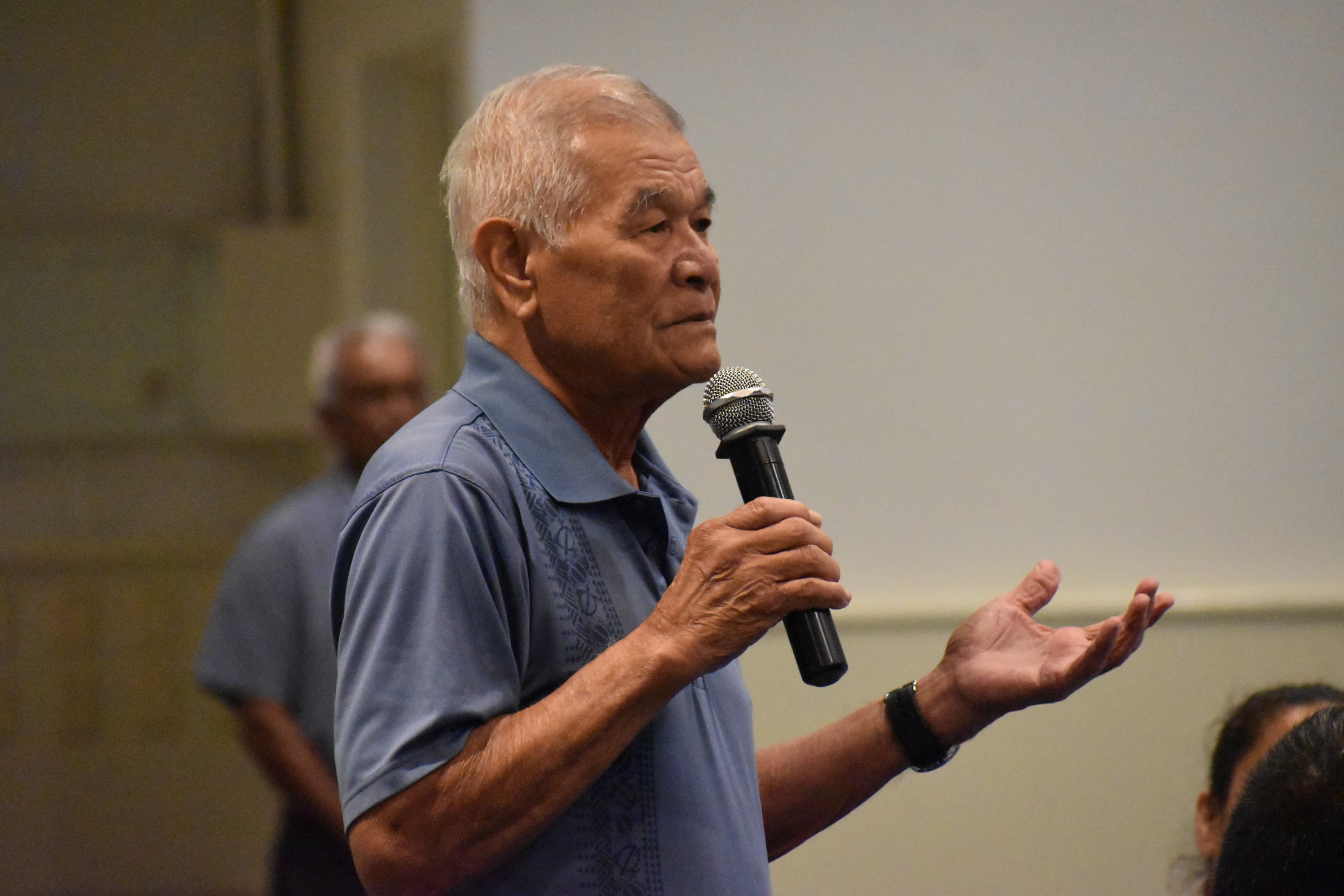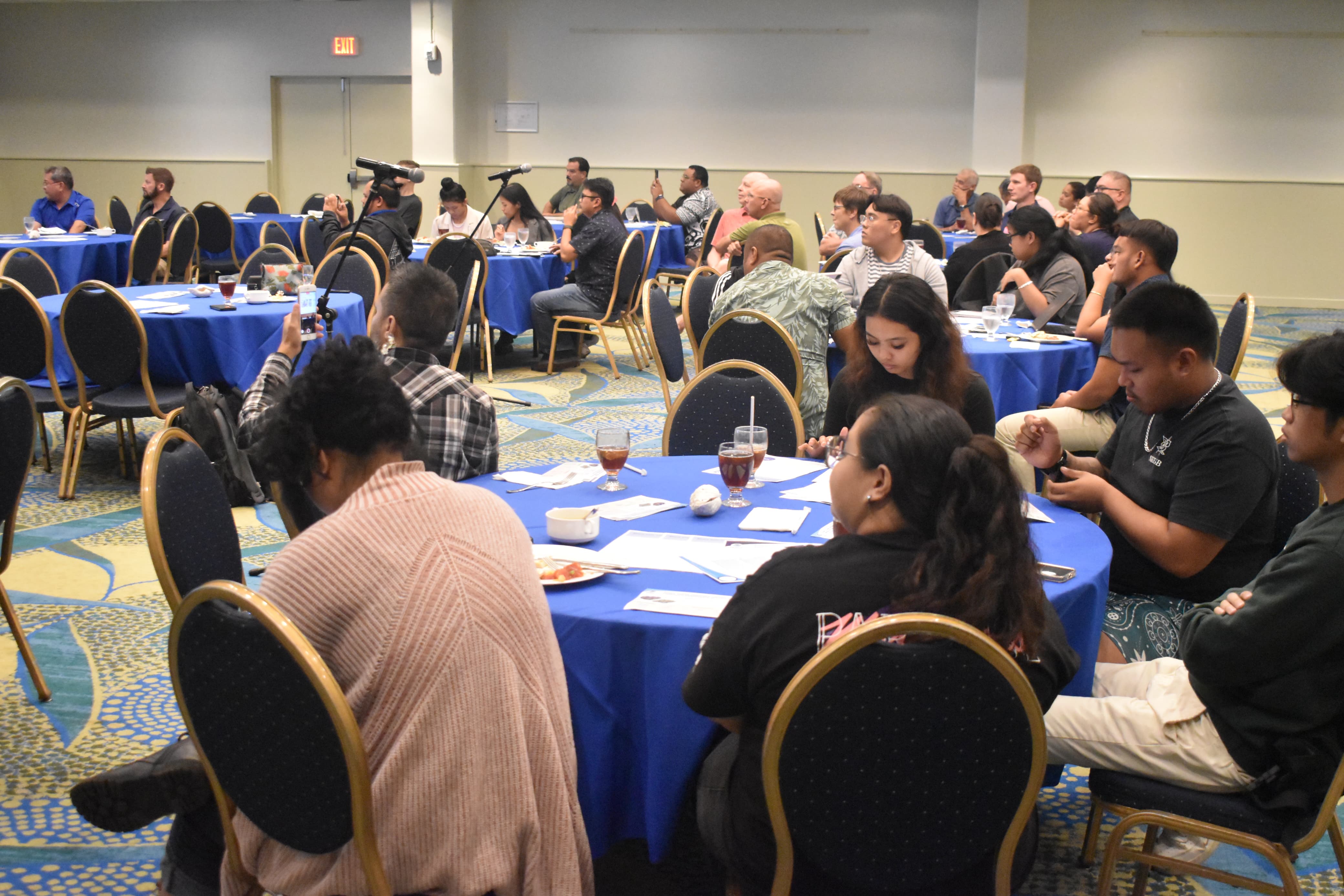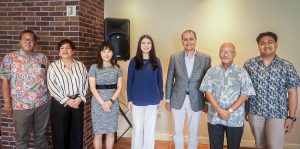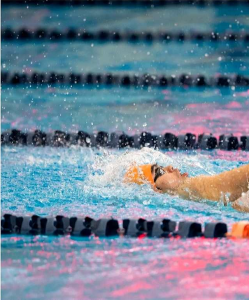21 more days to share comments on NOAA’s giant clam proposal
The clock is ticking for the public to voice their thoughts on a proposed NOAA Fisheries rule that could change the way giant clams are harvested, traded, and protected in the Pacific. With a comment period open until Oct. 23, residents of the CNMI and other stakeholders have a limited window to weigh in on regulations that could list five species of giant clams as endangered and one species as threatened.
At a public meeting held at the Crowne Plaza Resort Saipan last Sept. 19, local fishermen, artisans, and community leaders expressed their concerns about how the rule might affect their livelihoods and cultural practices. The conversation, however, is far from over, and NOAA Fisheries is encouraging everyone to provide feedback before decisions are finalized.
Biologist John Rippe of NOAA Fisheries explained during the public hearing on Saipan, that the effort to protect these clam species began in 2016 with a petition and a subsequent status review that assessed the risks of extinction. Based on the findings, species such as Hippopus porcellanus and Tridacna gigas are recommended for endangered status, while Hippopus hippopus may be listed as threatened. Though some of these species were once abundant in the Marianas, they are now nearly nonexistent, particularly in the wild.
Yet, for many islanders, the proposal brings more questions than answers. At the public meeting, Tanapag resident and longtime fisherman Juan I. Tenorio raised concerns about how federal regulations could impose unnecessary restrictions on local waters.
“I have never seen a giant clam on Saipan,” he said, questioning why these species should be listed when they aren’t locally present. For Tenorio, the issue touches on something deeper—the right of the CNMI to manage its own marine resources, and to continue to practice tradition and culture involving the ocean.
“Our life is either you farm or you go find life for your family out in the water,” he said. Tenorio also made note that when it came to conservation, islanders were raised with a conservation system already taught to them by their ancestors. Rules on what age to catch certain sea life, and what age not to catch them, showing that the Marianas has its own system of conservation as well.
The potential impact on local artisans is also a point of contention. Department of Lands and Natural Resources’ Kalani Reyes, noted how prohibiting the import and export of clam shells could significantly affect jewelry makers who rely on these materials. She highlighted the importance of shell-based crafts during cultural exchanges, like the Festival of Pacific Arts and Culture, where island nations share their traditional handiwork. “This would significantly impact shell carvers, jewelry makers, cultural practitioners,” Reyes said, urging NOAA to consider the broader implications of the rule.
During the meeting NOAA stressed that the proposed regulations are necessary to protect species that are at risk of extinction due to habitat loss, overharvesting, and climate change. Beyond the six species directly affected, the agency also wants to regulate four additional species—Tridacna crocea, Tridacna maxima, Tridacna noae, and Tridacna squamosa—that are often mistaken for the endangered clams due to their similar appearance.
While the proposed rule would allow residents to continue harvesting these four species for local use, NOAA seeks to prohibit the import and export of clam meat, pearls, and shell jewelry to prevent confusion with endangered species. Rippe explained that once the meat and shells are removed, it becomes difficult to distinguish between protected species and those still allowed for harvest.
“I want to emphasize that we have not made a final decision we are in a proposed role stage and so we are looking for your input at this point.”
Rippe said during the meeting, “So we are essentially soliciting your input on what our proposal is if we’ve overlooked any information in our proposal, if there’s any information that is incorrect, that’s the type of information we are soliciting from the public at this point, so that we can consider it in the final rule, within a year before we announce the proposed rule in July 2025.”
Rippe added, “We will be publishing a final rule our final listing determination taking into account the public comment we hear today any comments we receive online or by mail.”
As the comment period remains open, residents are encouraged to make their voices heard. Some, like Garapan resident Harley Eriich, acknowledged that federal involvement can sometimes be necessary to curb unsustainable practices. Recalling the damage caused by unregulated fishing methods like “using Clorox to harvest octopus or using dynamite to go fishing” things which he observed being done as he grew up, Eriich emphasized the need for education to ensure marine resources are managed responsibly. “If you leave those things unchecked, eventually somebody is going to step in and say, ‘This is how you should treat your land,’” Eriich said. “If we’re so adamant about taking care of our land, I think we should educate our own people.”
For Mathew C. Masga, a shell carver on Tinian, in his comment online he warned that the change could have devastating effects on Chamorro cultural traditions and local livelihoods.
Masga detailed the historical and cultural significance of giant clam shells in Chamorro art, pointing to evidence found at ancient burial sites. “Chamorro body ornaments, crafted from giant clam shells, can be traced back to ancient burial sites documented by the Northern Marianas Department of Historical Preservation,” Masga shared, emphasizing the long-standing role these shells have played in the Marianas’ cultural identity.
For over 10 years Masga shared that he has been carving various types of giant clam shells, replicating ancient Chamorro ornaments and tools, with the goal of promoting the island’s heritage. However, he explained that the proposed reclassification of giant clams as endangered could jeopardize this practice.
“For hundreds of years, our cultural identity has faced threats,” Masga said. “Reclassifying giant clam shells from threatened to endangered species status would further jeopardize our cultural heritage and artistic expression.”
He shared that the Sinahi necklace, carved from giant clam shells and shaped like the first crescent moon, has become a well-known emblem of Chamorro culture, often bought by visitors as souvenirs and by U.S. military personnel who carry a piece of the Marianas with them to their duty stations.
“Our remote location compounds these difficulties,” he said. “As the only shell carver on Tinian, it is essential to continue practicing and preserving our cultural heritage for future generations.”
While Masga acknowledges the importance of species protection, he expressed concern over how enforcement would differentiate between endangered and non-endangered clam species, given their physical similarities. “How can enforcement distinguish between different species of giant clams that share similar physical characteristics?” he asked, questioning the practicalities of the proposed regulation.
He also called on NOAA to consider a “grandfather clause” that would allow Chamorro ornaments carved from giant clam shells before the law’s enactment to remain in circulation. “Chamorro body ornaments have become a symbol of our culture, with many of our people proudly showcasing this jewelry around the world,” he noted.
Furthermore, Masga raised economic concerns regarding the ban on international transport of certain clam species. “The ban on transporting certain giant clam species internationally raises concerns about the economic impact on communities that depend on these shells,” he said, asking what plans NOAA has in place to mitigate the negative effects on local artisans and communities that rely on these resources. He urged the agency to provide more clarity on the programs it offers to both protect the species and promote the continuation of Chamorro cultural practices tied to the use of giant clam shells. “Reclassification of certain giant clam shells will significantly impact our way of life. What programs do you offer to help preserve these species and promote the continuity of our cultural practices?”
NOAA’s decision on the proposed rule is still pending, and local residents are encouraged to submit their comments.
For now, the public has until mid-October, specifically Oct. 23, to submit comments and influence NOAA’s decision. Islanders concerned about the future of their fishing, jewelry-making, or cultural practices are encouraged to participate in the process while they still can.
Those interested in sharing their opinions can submit comments online at https://tinyurl.com/clam-comments or mail them to John Rippe at NOAA Fisheries. The full details of the proposed rule can be reviewed at https://tinyurl.com/proposed-rule-change.

NOAA Fisheries biologist John Rippe speaks to concerned residents about the Proposed Listing Determinations for Ten Species of Giant Clams under the Endangered Species Act at the Crowne Plaza Resort Saipan last Sept. 19.
-CHRYSTAL MARINO

Tanapag resident Juan Tenorio shares his concerns about several parts of NOAA’s proposed listing determinations for 10 species of giant clams under the Endangered Species Act during the agency’s public comment session at the Crowne Plaza Resort Saipan last Sept. 19.
-CHRYSTAL MARINO

Saipan residents gather to hear NOAA’s proposed listing determinations for 10 species of giant clams under the Endangered Species Act at the Crowne Plaza Resort Saipan on Sept. 19.
-CHRYSTAL MARINO






